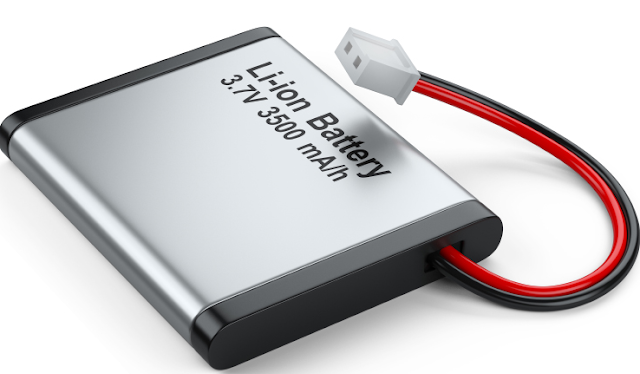Low battery lithium - ion batteries perform better lithium - ion battery is the type that has been popular in our ears, as already found in many electronic devices in our day to day.
Lithium- ion batteries are cheap, why can say cheap ? due to the latest technology which is also a new finding lithium- ion batteries must have performance that exceeds its predecessor
Lithium- ion battery called cheap , made of graphite anode material for the old version, the latest for which scientists through testing using silicon anode as its main ingredient.
Obviously so many things, especially the problem of materials and consideration of material available, the two elements above are graphite and silicon is a material that is still abundant in the earth.
Theoretically, both the anode material has a capacity of more than 3600mAh / g for silicon, while for graphite multiples of about 10 times the capacity compared with silicon.
Lhitium - ion battery capacity is determined by the number of lithium ions at the anode and the cathode store, the use of silicon as the anode can drastically increase the battery capacity, it is because theoretically a silicon atom can bond up to 3.75 lithium ions while the graphite anode six carbon atoms required for each lithium atom.
Scientists from the USC team Vitarbi develop cost-effective anode capacity silicon anode that is stable to above 1100mAh / g with an extension of up to 600 cycles, and it means the use of a lithium anode three times more powerful than its predecessor battery types.
But each discovery as a fixed cost effective anode has the effect , in addition to the positive effect remains negative effect on the use of lithium-ion battery electrodes occurs due to severe comminution volume expansion and retraction that occurs in the presence of silicone.
Scientists continue to search for a solution to this problem , the team returned from Vitarbi USC engineering professor who led Chongwu Zhou has developed a new anode design that uses porous silicon nanowires that allow solving the problem. However, it causes swelling production costs and in komersilkan widely.
Ge Mingyuan a graduate student and other members of Prof. Zhou, continued their studies look for solutions to reduce the cost to produce porous silicon particles through a simple and efficient method they called " ball - milling and stain - etching " ( ball milling and etching stain ).
"Our method of producing nanoporous silicon anodes are inexpensive and scalable for mass production in the manufacturing industry, which makes silicon a promising anode material for the next generation of lithium - ion batteries, " said Zhou.
"We believe it is the most promising approach to implementing silicon anodes in lithium - ion batteries to improve the capacity and performance"
In addition, some graduate students Jiepeng Rong and several members of his team also developed a sulfur powder coating the graphene oxide to improve the performance of lithium - sulfur batteries.
Sulfur has been a promising cathode candidate for many years due to high theoretical capacity, which is more than 10 times larger than the metal oxide or phosphate traditional cathode. Elemental sulfur is also abundant, inexpensive, and has low toxicity.
However, the practical application of sulfur has been greatly hampered by challenges including conductivity and cyclability are small, the battery lost power after a long unused.
Their research proved that graphene oxide top layer of sulfur can solve both problems. Graphene oxide has unique properties such as high surface area, chemical stability, mechanical strength and flexibility, and are therefore often used to coat the core material in products such as sensors or solar cells to improve their performance.
Layer graphene oxides of sulfur cathode for improving capacity of 800 mAh / g for 1000 cycles of charge / discharge , which is more than 5 times the capacity of the cathode in general.
Zhou and his team recently published their results in silicon anodes in Nano Letters. This paper is a collaborative effort between Zhou, USC Viterbi graduate students Mingyuan Ge, Jiepeng Rong and Xin Fang, and Matthew Mecklenburg from the Center for Electron Microscopy and Microanalysis at USC, and researchers from China's Zhejiang University and Lawrence Berkeley National Laboratory.
Separately, Zhou, Rong, Ge, and Fang also publish the results in Nano Letters on their method to easily produce graphene -coated sulfur cathode for lithium - ion batteries.
The conclusion that the separate testing of both the negative and positive electrodes have produced excellent results, the team is now working to test them together in a full battery.
They will further integrate silicon anode with the cathode of sulfur , as well as with other traditional cathode materials , to maximize the capacity of lithium- ion battery and overall performance.
"As far as we know, our technology with both silicon anode and sulfur cathode is one of the most cost-effective solution and because it shows promise for commercialization to create the next generation of lithium - ion batteries to power portable electronics and electric vehicles, "said USC Viterbi graduate student Rong.


0 Response to "Cheap lithium- ion batteries perform better"
Post a Comment